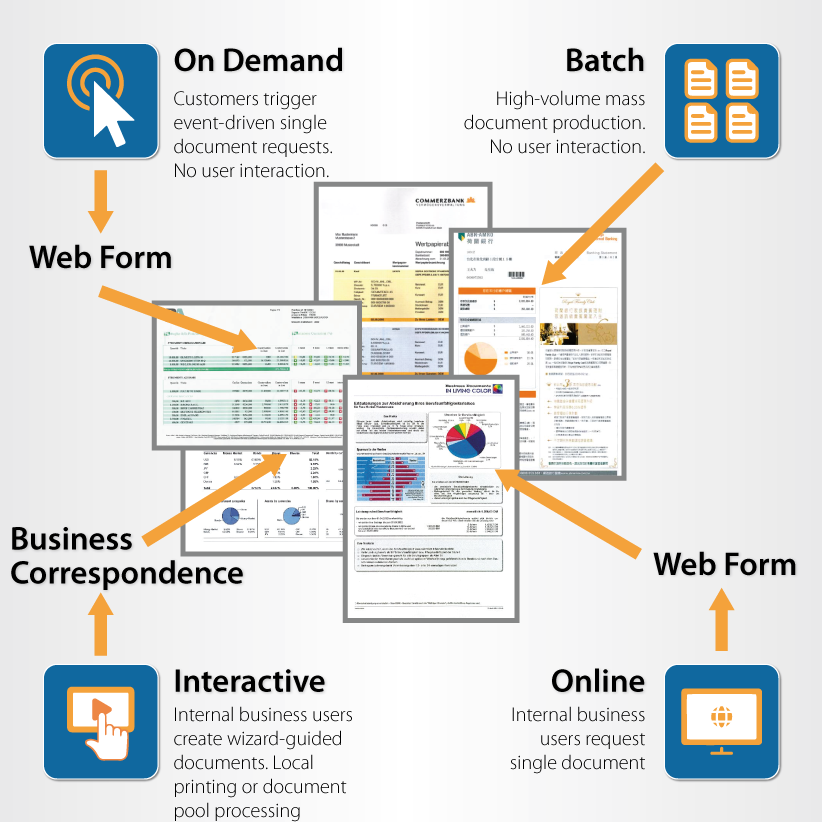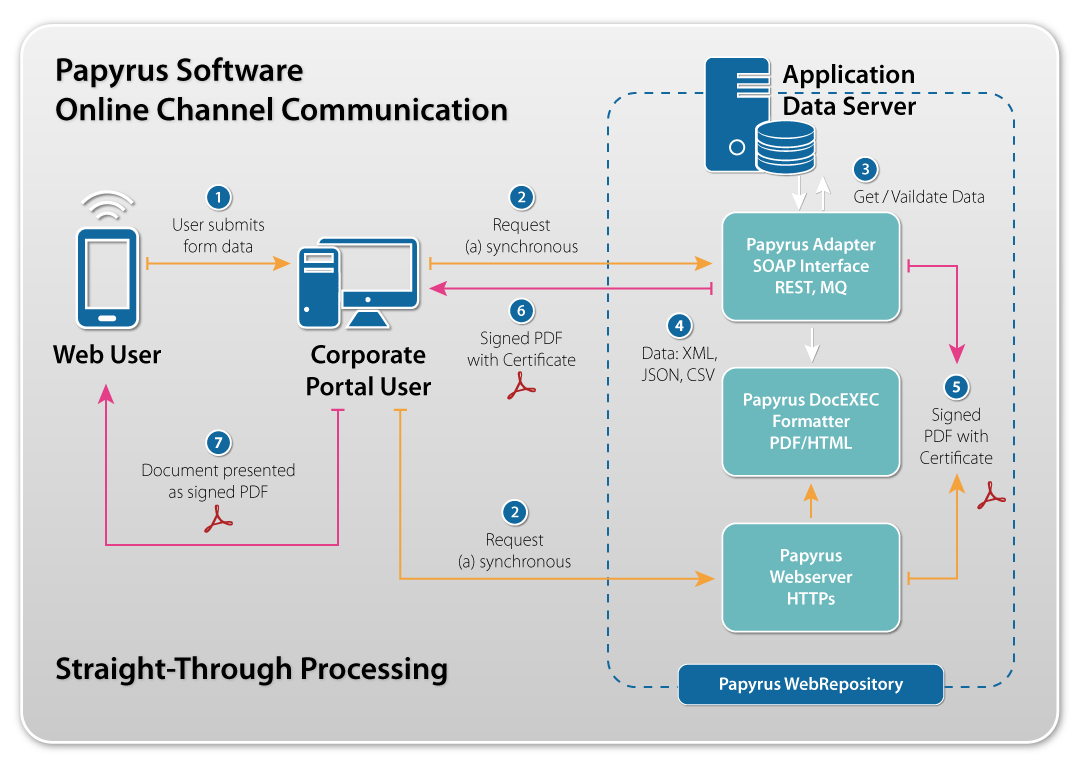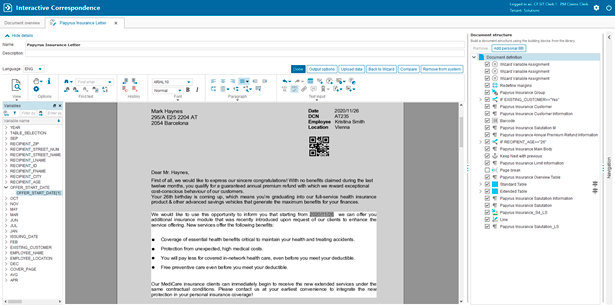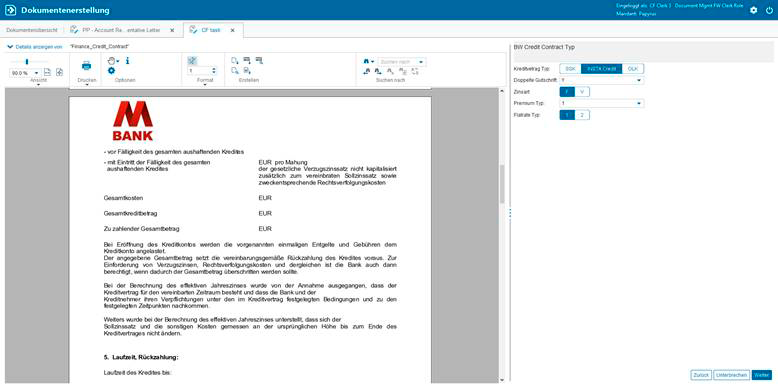Business Document Formatting
All output (batch/online/on-demand/interactive) is designer by the Papyrus Designer Suite and is generated by the Papyrus high-speed formatter DocEXEC on a server platform on premise or in the cloud. All common server and cloud platforms and the mainframe are supported. The output formats generated by DocEXEC are AFP/PDF/PDFA/PDFUA/HTML and index. All output can be routed to Papyrus Server for multi-channel print and e-delivery or first collected in the Document Pool for bundling, sorting, merging of multiple documents into one envelope.
Various data input types using different data formats like channel codes, XML and proprietary data structures from master data and record management systems must be supported in different code pages for flexible production requirements. Papyrus DocEXEC is able to process all these formats
DocEXEC can execute rules based on formatting results and thus directly interact with available white space, page break sequences, table breaks and the result of calculations on variable data inputs. Most formatting commands can be defined as variables and are thus fully data-driven. DocEXEC handles multiple code pages with ease, as each input data string is preserved with its original code page. Complex business documents must handle up to 5 codepages (operating system, input, rules, fonts, output) and, for interaction, additional search and capture codepages. Multilingual documents and most powerful dynamic charts and dynamic tables are standard features of the formatter.
The high speed formatter with no upper limit can scale across processors and platforms – the formatting volume varies depending on the applications, data, layout, logic and hardware. Benchmarks go up to 35M pages per hour/per server. Most of our customers have large Papyrus installations producing millions of documents, with some of our largest accounts producing over one billion pages per year, and having 25000 users.
Papyrus DocEXEC Formatting Benchmarks
Used system (docexectest):
OS: Microsoft Windows 10 Enterprise
CPU: Intel(R) Core(TM) i7-8700 CPU @ 3.20GHz, 3192 Mhz, 6 Core(s), 12 Logical
Processor(s)
RAM: 8GB RAM
Disk: Model SK hynix BC501 HFM256GDJTNG-8310A 256GB
| Marketing Letter - single page documents, address data from input file, marketing texts from overlay, outline fonts | ||
| pages/sec | pages/hour | |
| AFP | 22,456.14 | 80,842,104 |
| 6,550.67 | 23,582,394 | |
| 11,604.71 | 41,776,970 | |
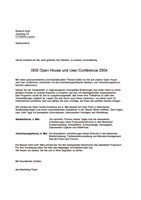
| Bank Statement - 2-page documents, address and account data from input file formatted by TABLE command, Overlay, images in IOCA and IM1, Outline Fonts | ||
| pages/sec | pages/hour | |
| AFP | 4,283.56 | 15,420,830 |
| 1,446.96 | 5,209,045 | |
| 2,640.73 | 9,506,635 | |
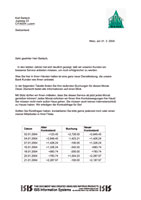
On Demand documents
The Webuser can request documents directly via a web form hosted on a company-specific web portal and receive them directly and immediately in their web browser in PDF or HTML format. Document requests are received via one of the Papyrus adapters to trigger custom DocEXEC document formatting runs that can directly deliver output in PDF or HTML. Optionally, post-processing steps can be included within the Papyrus Output Management solution if more complex workflows are required.
Online Documents
Internal business users (of e.g. a bank, insurance company, etc.) trigger the back end generation of documents for individual customers without further interaction before sending documents into the distribution process utilizing the Papyrus Output Management capabilities. Main difference to batch processes is that a batch job produces millions of document pages per run whereas online documents are produced in single-document runs.
Interactive documents
A company internal business clerk is able to create customer individual documents utilizing a wizard or interactive prompting application prepared by the correspondence administrator. This way, clerks can address the needs of their clients by customizing documents with individual texts. Document modifications are controlled by user access rights so that compliance rules are met. Papyrus adapters like the REST adapter allows to load additional data into the document that may come from internal sources or even external cloud services. Usually, the generated individual document is checked into the Papyrus document pool for handling all possible outbound channels (bundled print, individual email, etc.) using Papyrus Output Management. Clerks are of course also able to generate a direct printout on local printers.
Papyrus Correspondence Wizard document composition mechanism guides users through choices & decisions to automatically build documents step-by-step based on the information provided. End business users can enter variable data, select/de-select document building blocks, perform the in-document editing of prompted parts, include personal building blocks, etc. depending on their permissions and document settings defined by Business Administrators with the rest of the document locked for change. Papyrus offers control to the level of which paragraph or variable can be edited, and what font, color, style, etc. can be used.
Correspondence Wizard document composition mechanism guides users through choices & decisions to automatically build documents step-by-step based on the information provided. In-document editing allows for free text and data entry from a pull-down menu in prompted areas of the document.
Papyrus document composition unique capabilities
In Papyrus, one unified application design and a single formatter is used for batch, online, interactive, and on-demand composition.
- High speed performance
- One formatter for batch/online/on-demand/interactive
- Single source for AFP/PDF/HTML
- All building blocks maintained in central library
- All results are 100% WYSIWYG
- No screen fonts or proprietary Papyrus formats
- Any data type, record or file format is supported, not only XML
- No data manipulation and tagging needed
- No external coding needed
- All output is at time of delivery multi-channel ready
- Integrated change and release management
- Job/spool/queue/print e-delivery management
- Natural language rule editor
- State-and-event-driven process management
- Enterprise platform lifecycle solution
